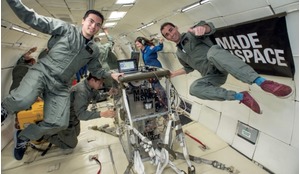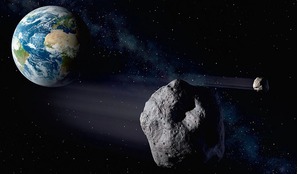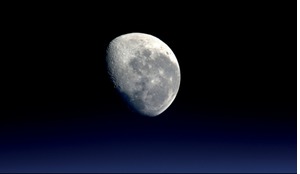For thousands of years, humans have gazed in wonder at the immensity of the sky above, documenting the movements of the Sun, Moon, stars and planets, incredulous at the magnificence of it all. Starry nights have inspired the greatest thinkers and scientists of all time but now humanity is faced with the supreme challenge of protecting the final frontier. Hard on the heals of anthropogenic climate change comes the escalating problem of space debris which is now also posing a serious threat to future life on Earth and, in the view of the author, is rapidly developing into both technical and ethical challenges.
Since the beginning of the Space Age, heralded by Sputnik 1 reaching low Earth orbit (LEO) in 1957, more than 6,000 successful launches have led to the problem of space debris: defunct human-made objects – or fragments caused by their collisions or explosions – which gravitate into the crowded orbit of the Earth.
NASA scientist Donald J Kessler first theorised about the risk of an exponential increase in space debris due to chain collisions in low Earth orbit back in 1978, recognising that if such a scenario were to occur, access to space could be inhibited for generations. Moreover, due to kinetic energy released during an impact, even the smallest objects can (and have already) disrupted working satellites.
A solution must be found to ensure the protection of existing in-orbit infrastructure: not only could billions of dollars be at risk, but also all the satellite services we currently rely on for many everyday activities might disappear. Given the growing interest of private organisations that plan to launch thousands of new satellites in the coming years, the challenges posed by orbital debris require the full attention of industry players and policymakers alike.
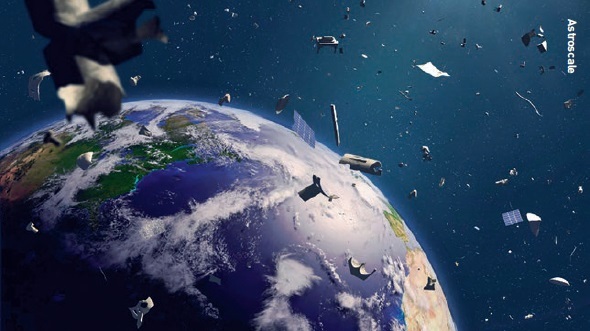 Increasing volumes of man-made debris objects in Earth orbit pose a dynamic collision risk to operational satellites and other debris. Given mankind’s urge to extend its reach to new worlds, effective measures need to be taken to address the space debris in LEO to avoid the same mistakes there.
Increasing volumes of man-made debris objects in Earth orbit pose a dynamic collision risk to operational satellites and other debris. Given mankind’s urge to extend its reach to new worlds, effective measures need to be taken to address the space debris in LEO to avoid the same mistakes there.
Ethical considerations
A solution must be found to ensure the protection of existing in-orbit infrastructure
The challenges of space exploration inevitably pose fundamental ethical dilemmas. What are humanity’s responsibilities as explorers of ‘new worlds’? Many believe we have moral obligations towards the cosmos from the moment we begin to interact with it, a view I also share.
While it may be tempting to consider the universe as offering infinite and unlimited resources, a place to explore and make use of, the need to protect a pristine environment from limitless human activity is both a practical and ethical priority.
Taking a step back, the question of ‘morality’ concerning issues surrounding space debris is sometimes linked to considerations about whether humans should refrain from undertaking space activities at all.
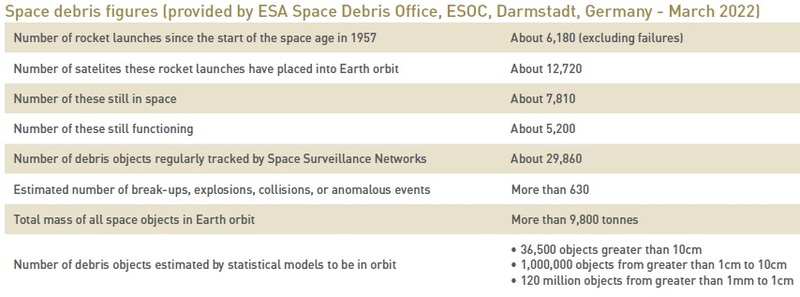
One might, indeed, doubt the legitimacy of such activities if simply motivated by the desire, albeit natural, for discovery and exploration, especially considering the damage that human actions have caused on Earth. Wouldn’t the same mistakes be likely to be repeated in new virgin environments?
Nevertheless, nowadays it is commonly accepted that large investments in the space industry do not stem merely from our drive for discovery but are, on the contrary, motivated by the benefits that such activities bring to humanity, including monitoring climate change and identifying exploitative practices or optimising agriculture and farming. The possibility of a ‘second home’ should the Earth become inhospitable or overpopulated is also often mentioned by space exploration advocates.
Some could, however, argue that the moral legitimacy of actions that pose an environmental risk because they benefit mankind, is attributable to an anthropocentric – or human-centred – view of the world, particularly given how the human footprint is historically far from negligible when setting foot in new domains.
According to this perspective, human beings are superior to other entities, such as nature, which are mere resources available for them to access at will. This opposes the idea at the heart of the so-called environmental ethics, which instead supports an objective intrinsic value of nature.
The question to address would be: is it ethical to interact with a pristine foreign environment to improve life on Earth? To have ‘a second chance’?
Nonetheless, it might be further claimed that we also have moral obligations towards both future generations and our own planet: the duty to ensure the survival of mankind and preserve Earth and all its living species.
Debating the ethics of space activities is certainly of great importance and fascination, however the space race is already a contemporary matter with profound consequences. Whichever perspective one wishes to adopt, space debris is undoubtedly an issue that must be tackled, whether that is done in the name of protecting Nature or of humanity’s benefit and the need to have long-lasting access to space.
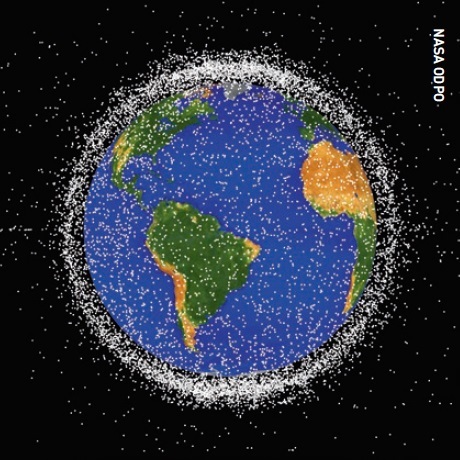 The low Earth orbit region of space, within 2,000 km of Earth’s surface, is the most concentrated area for orbital debris.
The low Earth orbit region of space, within 2,000 km of Earth’s surface, is the most concentrated area for orbital debris.
Current challenges
Challenges posed by orbital debris require the full attention of industry players and policymakers alike
Space debris related challenges vary in nature: technological, regulatory, and linked to business models. Although very important, the focus cannot only be on orbital debris removal technologies – where great strides are being made, but which are not advancing as fast as new satellite launches – nor on commercial organisations and the need for them to develop sustainable business models that support space debris mitigation from the earliest stages of mission design. Instead, the focal point must be on the challenges and opportunities associated with international cooperation and the creation of an accessible digital data library to support global space debris monitoring.
At present, there is a distinct lack of regulation at global level: in fact, only non-legally binding guidelines exist. Examples are the IADC ‘Space Debris Mitigation Guidelines’, issued in 2002 and a basis for the UNOOSA ‘Space Debris Mitigation Guidelines of the Committee on the Peaceful Uses of Outer Space’, and the recently adopted 21 UN COPUOS ‘Guidelines for the Long-term Sustainability of Outer Space Activities’.
The difficulty is that all the existing standards are soft-law instruments, lacking in compulsion and, although reflected by the regulations of many spacefaring nations, they are neither globally implemented nor followed in a unified manner.
Whilst some argue that high levels of bureaucracy hinder technological innovation, the urgency of addressing space debris issues is evident, as is the need for international collaboration between governments, private organisations, and academia, to intervene and develop policies and protocols with force of law, aimed at the mitigation and removal of orbital detritus.
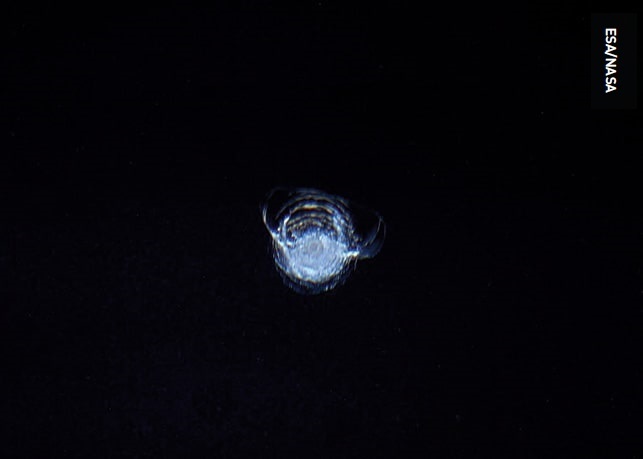 Even the smallest objects can have an effect on spacecraft and equipment because of the velocity of their impact. ESA astronaut Tim Peake took this photo of a 7 mm diameter circular chip from inside the Cupola of the International Space Station in April 2016. The chip was gouged out by the impact from a piece of space debris, possibly a paint flake or small metal fragment no bigger than a few thousandths of a millimetre across.
Even the smallest objects can have an effect on spacecraft and equipment because of the velocity of their impact. ESA astronaut Tim Peake took this photo of a 7 mm diameter circular chip from inside the Cupola of the International Space Station in April 2016. The chip was gouged out by the impact from a piece of space debris, possibly a paint flake or small metal fragment no bigger than a few thousandths of a millimetre across.
Debris monitoring
The need to protect a pristine environment from limitless human activity is both a practical and ethical priority
A second major issue concerns the monitoring of orbital debris, incredibly important for making informed and targeted decisions. Despite the existence of several space surveillance systems – such as the United States Space Surveillance Network – there is currently no unified database.
World-recognised subject matter expert in astrodynamics-based Space Domain Awareness sciences and technologies, Dr Moriba Jah, states that decisions that should be supported by data are often made based on incomplete or biased information.
As emerged during a work stream addressing the space debris issue – as part of the Sustainable Space Challenges initiative organised by Space Scotland in 2021 – a possible solution would be the creation of a digital data library with the following attributes: “open-access, multi-source information, unbiased, cross-referenced, scalable, with data uncertainty quantification, and knowledge graphs +/- AI/ML (artificial intelligence/machine learning)”.
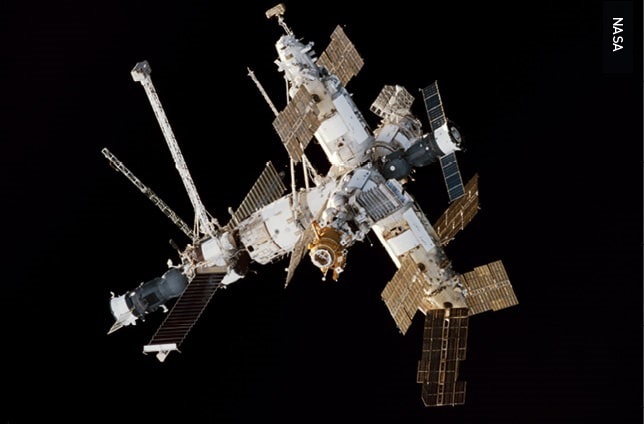 Russia’s Mir Space Station viewed from Endeavour during STS-89. Mir was deorbited in March 2001 and most of the 130,000 kg station burned up in the atmosphere but about 1,500 fragments reached Earth’s surface. A number of beach-goers in Fiji captured photographs of blazing Mir debris and there were reports of sonic booms caused by the heavy debris.
Russia’s Mir Space Station viewed from Endeavour during STS-89. Mir was deorbited in March 2001 and most of the 130,000 kg station burned up in the atmosphere but about 1,500 fragments reached Earth’s surface. A number of beach-goers in Fiji captured photographs of blazing Mir debris and there were reports of sonic booms caused by the heavy debris.
Although finding intervention strategies is now crucial, ideally, in the future, we will see more prevention, and cases of reflection preceding action.
At a time when the sector is taking significant steps to encourage people from non-technical backgrounds to consider a career in space, it would be worth investigating ways to increase the involvement of humanities professionals, such as philosophers and ethics advisors, to deal with issues of morality and legitimacy, alongside figures such as space lawyers. Even though NASA has an Ethics Team, ‘space ethics’ is in fact still far from being conventional.
The act of exploration is part of our very essence as humans. Going into the mysterious unknown teases our visceral sense of need for discovery and research. Despite the various challenges ahead and the urgency to act, we have a real opportunity to learn from our mistakes and adopt a more sensible, responsible, and sustainable approach to space, minimising our negative impact and ensuring that future generations can continue to be inspired by the starry firmament above.
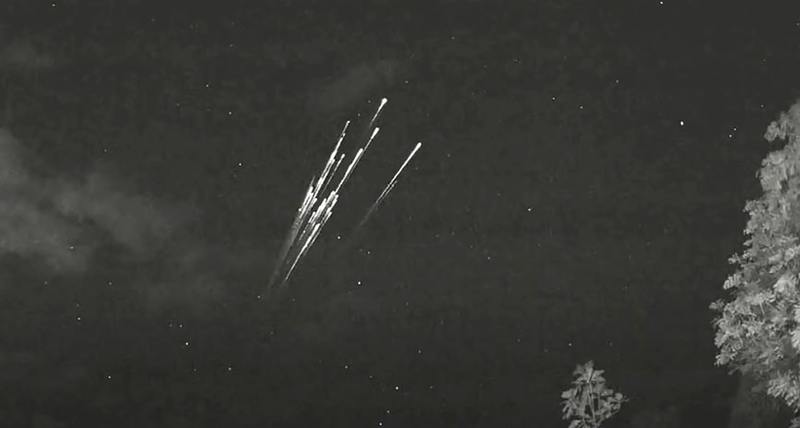 Unscheduled re-entry of a just launched SpaceX Starlink satellite over Puerto Rico in February 2022. Some 40 out of 49 satellites re-entered Earth’s atmosphere before reaching their correct orbits due to the unexpected impacts of a geomagnetic storm.
Unscheduled re-entry of a just launched SpaceX Starlink satellite over Puerto Rico in February 2022. Some 40 out of 49 satellites re-entered Earth’s atmosphere before reaching their correct orbits due to the unexpected impacts of a geomagnetic storm.
About the Author
Lara Zanoni is Marketing Manager at AstroAgency, a strategic marketing firm specialising in the global commercial space sector. With a Master’s degree in Corporate Communications, Marketing & Public Relations and a deep interest in philosophy and ethics, Lara strives to bridge the gap between these fields and the space industry. A member of the Space Scotland New Voices in Space group, she is driven by the belief that inclusivity and equal opportunities should become standard practice and wants to play a role in ensuring the commercial space sector grows into a more diverse and collaborative ecosystem.









